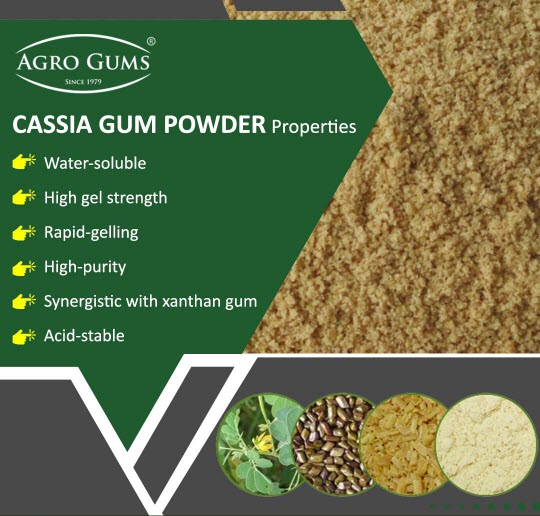Introduction
Cassia gum, a valuable natural polysaccharide used in various applications, is derived from the seeds of the Cassia plant. Its manufacturing process involves several meticulous steps to ensure the production of high-quality cassia gum powder. This article outlines the methodology of manufacturing cassia gum powder, including the key processes involved in transforming raw cassia seeds into the final powdered product.
Raw Material Preparation
1.1. Seed Cleaning and Sorting
The initial step in manufacturing cassia gum powder involves the thorough cleaning of cassia seeds. Raw seeds are first subjected to cleaning processes to remove any unwanted farm particles, stones, and debris. This step ensures that only the highest quality seeds proceed to the next stages of production. Cleaning is crucial for maintaining the purity and quality of the final gum powder.
1.2. De-Husking and De-Germing
Once cleaned, the cassia seeds undergo de-husking and de-germing. This process involves milling and screening to separate the endosperm from the husk and germ. The endosperm is the part of the seed that contains the valuable polysaccharides needed for cassia gum production. De-husking and de-germing are essential to obtaining a high yield of pure gum powder.

Processing and Refinement
2.1. Mechanical Treatment
After obtaining the endosperm, it undergoes a series of mechanical treatments to further purify and refine the material. These steps involve grinding and splitting to achieve the desired particle size and consistency. The mechanical processing ensures that any residual husk or germ particles are removed, leaving behind a high-quality product.
2.2. Thermal Treatment
The processed endosperm is then subjected to thermal treatment. This step is crucial for further refining the cassia gum. The thermal treatment causes the endosperm to split, which is then ground to form the final cassia gum powder. The heat treatment helps to enhance the gum's functional properties and ensures a consistent texture.
2.3. Semi-Refinement
The semi-refined cassia gum typically contains detectable amounts of anthraquinones, which are naturally occurring compounds in the raw seeds. During the semi-refinement stage, the gum is treated to reduce these compounds to acceptable levels while maintaining its polysaccharide content. The result is a semi-refined product that meets industry standards for purity and quality.
Quality Control and Final Processing
3.1. Quality Assurance
Throughout the manufacturing process, quality control measures are implemented to ensure that the cassia gum powder meets the required standards. This includes testing for particle size, purity, and the presence of any contaminants. Quality assurance is critical for maintaining the functionality and safety of the final product.
3.2. Final Grinding and Packaging
After passing quality checks, the cassia gum is finely ground to achieve the desired powder consistency. It is then packaged in suitable containers to protect it from contamination and moisture. Proper packaging ensures that the gum retains its quality during storage and transportation.
Conclusion
The methodology of manufacturing cassia gum powder involves a series of carefully controlled processes, from the initial cleaning of seeds to the final packaging of the powdered product. Each step is designed to ensure the production of high-quality cassia gum, with precise control over its texture, purity, and functionality. As cassia gum continues to find applications in various industries, understanding its manufacturing process is essential for ensuring product quality and performance.
FAQs About Cassia Gum Powder
Web Design & Digital Marketing by Opal Infotech

